Ooh Ah Shangri-La
After walking to the eastern end of the gorge, our plan was to take the less used northern road to Zhongdian, via the limestone terraces at Baishutai.
Chinas southern province of Yunnan is very mountainous, especially this part of it, and because of this its quite sparsely populated. This is the southern tip of the Himalayas, with peaks ranging in height from about 3800m to 5700m, getting higher and higher the further north you travel. Zhongdian, in the far north of Yunnan, is the start of the Tibetan world, with the border being only 150k's to the north. The majority of the population are ethnically Tibetan, and have held onto their own language and traditions despite the onslaught of the Han Chinese.
When I walked the gorge four years ago, there was only a dirt track leading down to Daju, the town of at the eastern end of the gorge, but now there's a tarmac road leading all the way through to Zhongdian. For us this was perfect as it made for easy travel, but it is such a new route that it isn't in any guidebooks yet :)
Without doubt, the bus ride from Daju to Zhongdian was one of the best we have been on. The road repeatedly wound its way up mountain sides, through passes, and back down again into villages nestled on hillsides.
At the top of the passes we were sometimes at the snowline, surrounded by grey and white peaks, while the bottom of the valleys were almost subtropical, in between the two the climate and vegetation changed at almost every bend.
We reached Baishutai around 5pm, and with only a couple of hours until sunset we set off immediately to see the limestone terraces, which are just behind the village on a hillside.
Its always hard for us to know if were going to like tourist attractions like Baishutai's limestone terraces, as there's never much in guidebooks about out of the way places like that, and the tourist information literature is always biased. The LP will have one paragraph saying something like "The terraces are easily accessible from the village, are X years old, and cost 30RMB to get in", the tourist literature will say something like "Come and marvel at natures wonderful gifts at the amazing Baishutai.... etc etc", and after the Lugu Hu episode we were a bit wary.
Fortunately, we did marvel at natures wonderful gifts at the amazing Baishutai.
The terraces look like they were ordinary rice terraces once upon a time, but a mountain spring rich in dissolved calcium at some point started running over them and caked them in lime. The result is truly stunning. Unfortunately we didn't take that many pictures, but we did take plenty of video, so we can get some from that later.
The whole place was like a fairy grotto, with impossible ancient looking trees, twisted, gnarled and stunted, often covered with moss and lichen.
The locals believe that if a woman drinks from the spring she will become pregnant.... With a population of 1.3 billion, you wouldn't imagine that the Chinese would need any lessons in reproductive biology, but there you go, apparently there is no need for men any more, just drink from the spring.
Needless to say, I kept a pretty close eye on Traci, just in case she felt the need for a drink!
I wasn't going to write about the following episode, but enough time has passed for me to get over my wounded ego :)
On the way back out of the park I noticed a very inviting looking highly polished, steeply sloped concrete wall..... Of course, I couldn't let it pass..... I had to slide down it, despite Traci's all too valid protests of "that's a bloody stupid idea". All went well until I gathered a lot of speed and had to jump off the end. One badly twisted ankle, probable broken rib, and bruised ego later I had to admit that it probably was a stupid idea. Fortunately, Traci captured the whole thing on video for posterity.
As we drove further north, the villages started to change, gradually showing more and more Tibetan influence. As we came over the last mountain pass, we dropped down into a large grassland plateau dotted with Tibetan villages, gompas, and herds of yaks.
Tibetan architecture is a little bizarre to look at, houses have sloping walls about 50cm thick which are coated with mud and painted white. I suppose it would be pretty good to have half metre walls in the Himalayas though!
We arrived in Zhongdian around lunch time, and after dropping our bags at our hotel and putting on nearly every item of clothing we had (yup, it was bloody freezing.... literally) we set off to explore the town.
Zhongdian is a weird place to say the least. We wandered around a food market among hanging Yak carcasses, Yak heads, Yak feet, and Yak skin blankets (Yaks are bloody huge by the way, and Yak meat tastes excellent). We drooled at the amazing variety of mushrooms they have in that region (fresh shitake mushrooms for about AUD 50c a kilo.... A KILO!!!!), and generally did a good job of working up an appetite in preparation of our first Tibetan meal.
Having now tried quite a lot of Tibetan dishes, I think the best way to describe them is coronary inducing. I'm not sure which ethnicity has the highest rate of heart disease, but I'll bet the house on the fact that which ever one can claim that title can only do so because the Tibetans haven't been tested. This can be the only explanation.
One morning we were treated to a typical Tibetan breakfast: Yaks butter, fried in Yaks cheese (I'm pretty sure it was supposed to be Yaks cheese fried in Yaks butter, but that's not the way it looked); Tibetan crispy pork with chilly (the fattiest bits of pork belly, fried in.... yes you guessed it, Yaks butter) and to wash it down there was a large pot of Tibetan tea. To make Tibetan tea, you take a large pile of Yaks butter, dilute it (very slightly) with Yaks milk then add tea and spices. FOR BREAKFAST FOR GODS SAKE. It took us nearly an hour to recover from that.
The highlight of our visit to the Tibetan world was definitely visiting the gompa (Tibetan for monastery), a little way out of the town.
I'm not usually very interested in places like that, being a militant atheist, but this place was very different. The second we stepped into the grounds we were debating whether we should extend our stay, just so we could spend more time there. Unfortunately photography isn't allowed in the monastry, so we only have a few pics.
It was an incredibly calming place to be, which is something to be cherished when traveling through China. We didn't get past the courtyard for the first hour, we just sat watching and listening to the monks debating, chanting, and philosophising.
The younger monks sat around an older one, and by the looks of it, the younger ones posed questions or arguments to him, which he dutifully answered. On getting an answer, the younger monks would chant in the low guttural tones that Tibetan Buddhists do and roll beads through their hands.
Being up high in the mountains with nothing but the squalks of birds, chanting monks and chiming bells is a great experience. We just sat and soaked it up.part of the monastery complex
Tibetan is much prettier to look at than Chinese
The view from the monastery courtyard
In the end, half a day was enough at the gompa and we made our way back to town, just in time to catch our bus back to Lijiang.
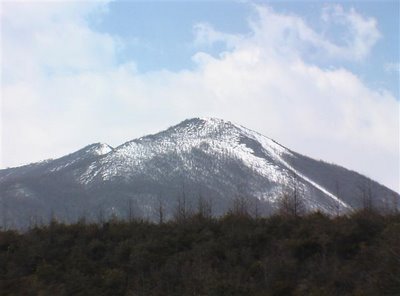

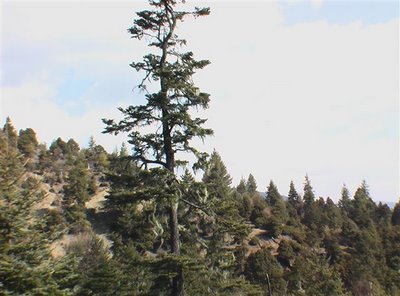






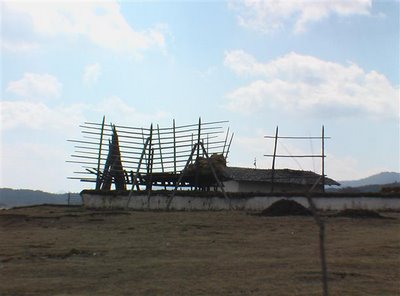

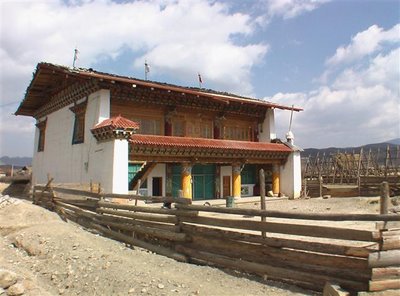
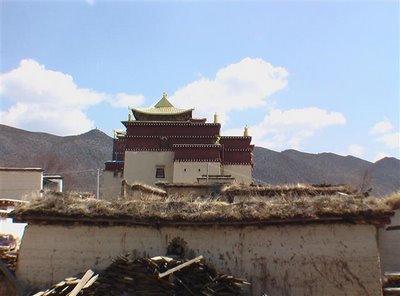

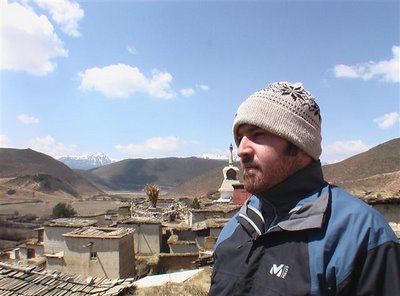


0 Comments:
Post a Comment
<< Home